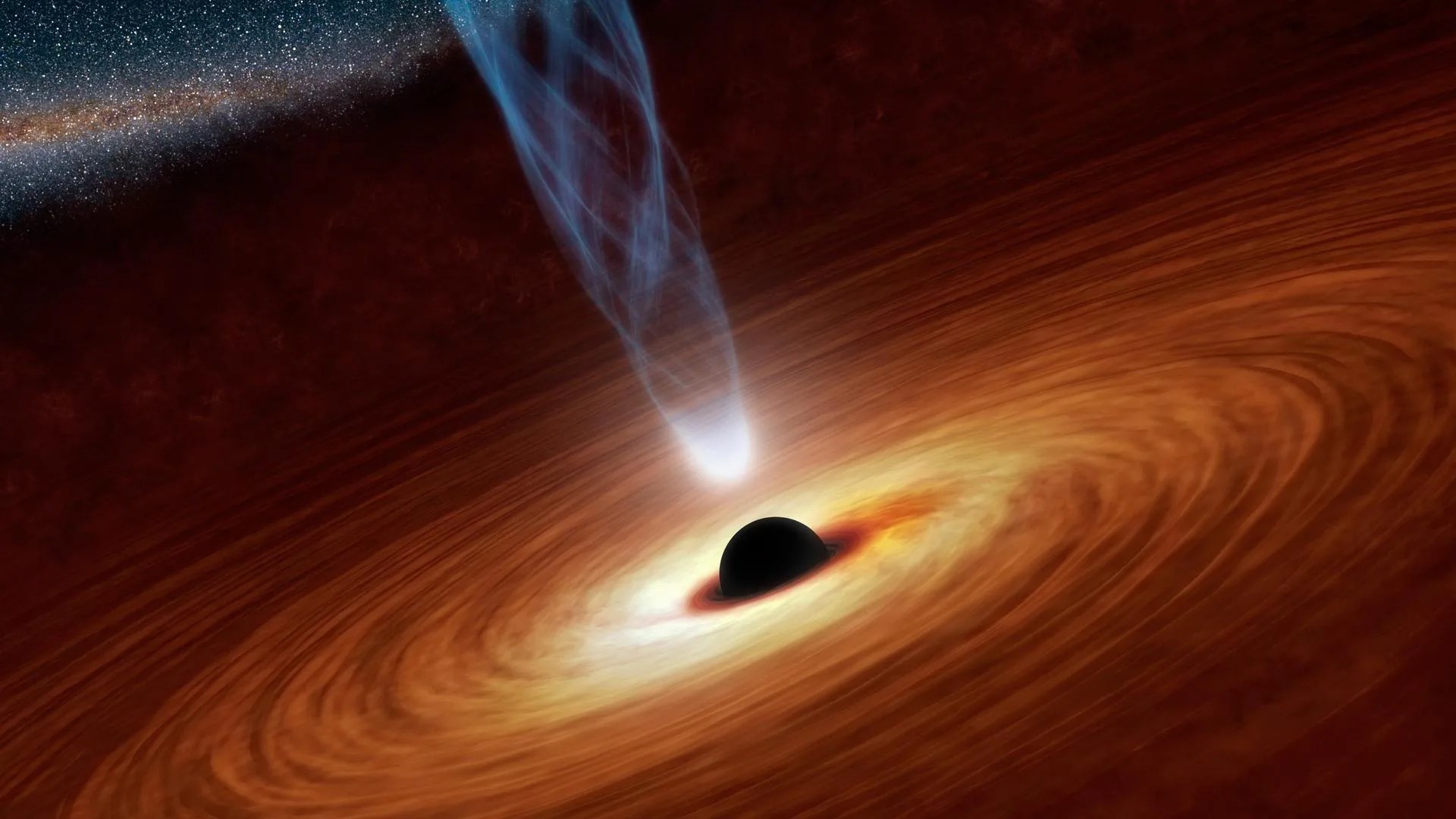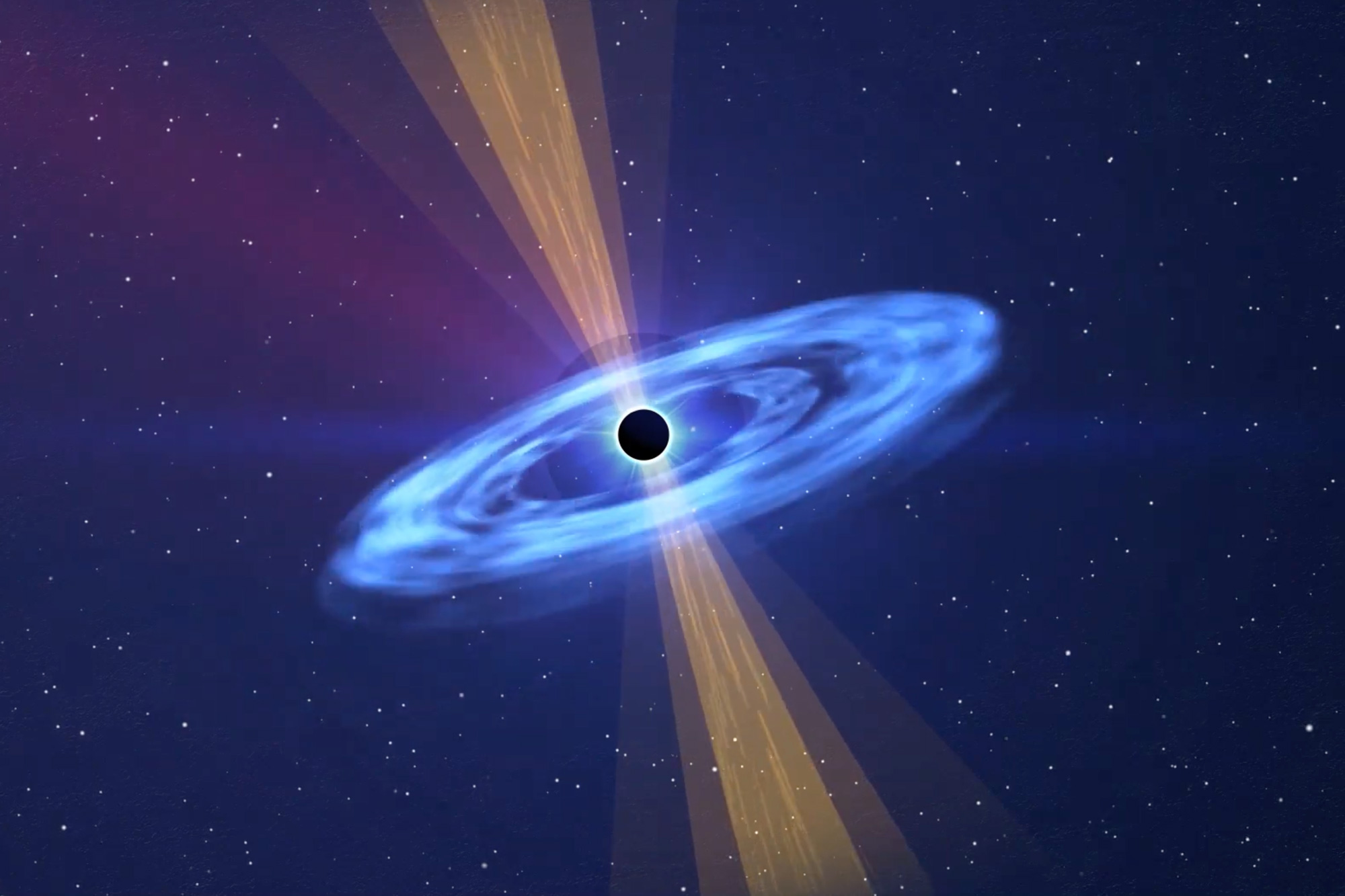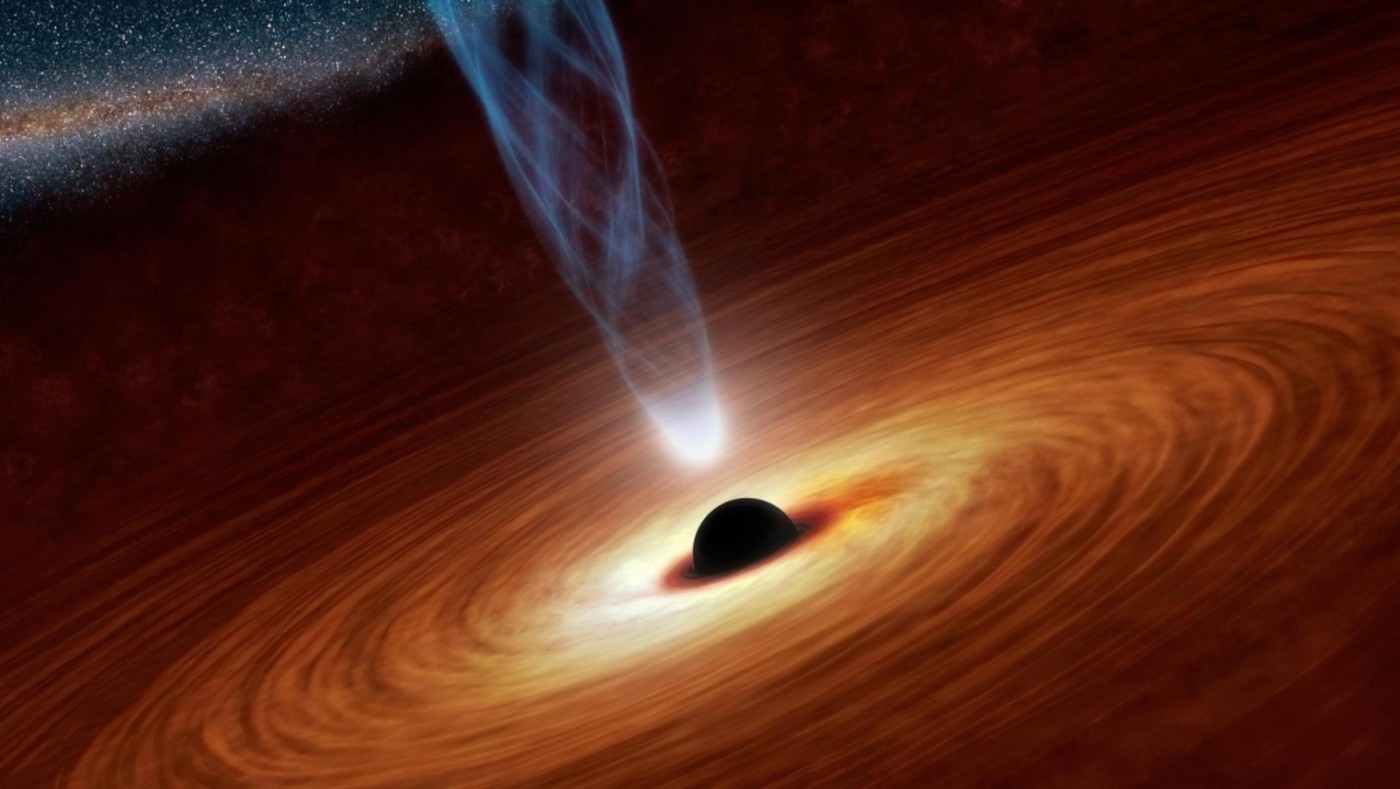Black Holes - Center of Nothingness



Black holes do not die per se, but they are theoretically predicted to eventually slowly evaporate over extremely long time scales.
Black holes grow by the accretion of matter nearby that is pulled in by their immense gravity. Hawking predicted that black holes could also radiate away energy and shrink very slowly. Quantum theory suggests that there exist virtual particles popping in and out of existence all the time. When this happens, a particle and its companion anti-particle appear. However, they can also recombine and disappear again. When this process occurs near the event horizon of a black hole, strange things can happen. Instead of the particle antiparticle pair existing for a moment and then annihilating each other, one of them can get by gravity and fall into the black hole, while the other particle can fly off into space. Over very long timescales, we are speaking about timescales that are much much longer than the age of our universe, the theory states that this trickle of escaping particles will cause the black hole to slowly evaporate.
Are black holes wormholes?
No black holes are not wormholes. Wormholes can be thought of as tunnels that connect two separate points in space and time. It is believed that the interior of black holes could contain a wormhole, the puncture is spacetime, that could offer a portal to another point in spacetime potentially even in a different universe.
According to the Space Telescope Science Institute (STScI) approximately one out of every thousand stars is massive enough to become a black hole. Since the Milky Way contains over 100 billion stats, our home galaxy must harbor some 100 million black holes.
Though detecting black holes is a difficult task and estimates from NASA suggest there could be as many as 10 million to a billion stellar black holes in the Milky Way.
The closest black hole to Earth is dubbed "The Unicorn" and is situated approximately 1,500 light-years away. The nickname has a double meaning. Not only does the black hole candidate reside in the constellation Monoceros ("the unicorn"), its incredibly low mass — about three times that of the sun — makes it nearly one of a kind.
In 2019 the Event Horizon Telescope (EHT) collaboration released the first image ever recorded of a black hole. The EHT saw the black hole in the center of galaxy M87 while the telescope was examining the event horizon or the area past which nothing can escape from a black hole. The image maps the sudden loss of photons (particles of light). It also opens up a whole new area of research in black holes, now that astronomers know what a black hole looks like.









































